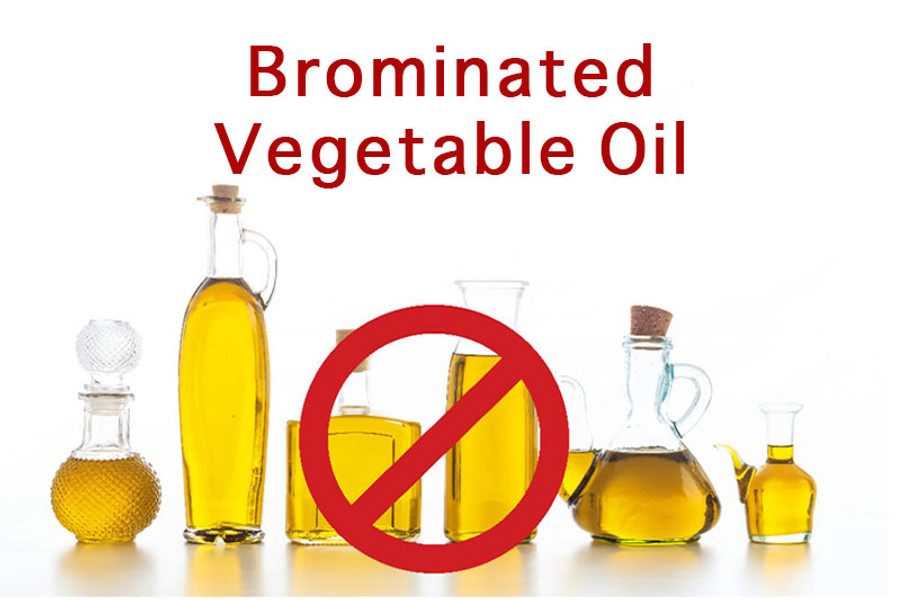BVO Bans Worldwide: EU, Japan, India Act
Posted by Fresh Harvest Market on 11th Jul 2024
Unveiling BVO (Brominated Vegetable Oil): Origins, Applications, Health Ramifications, and Global Perspectives
Exploring the intricate landscape of Brominated Vegetable Oil (BVO), this article delves into its historical roots, applications in the food industry, health risks, symptoms, products it's found in, and its status across the globe. Let's uncover the story of BVO and the nuanced reasons behind its varying use in different countries.
The BVO Odyssey: A Historical Perspective
Brominated Vegetable Oil (BVO), initially designed as a flame retardant by bonding bromine with vegetable oil, unexpectedly found its way into the food and beverage sector. Its fire-suppressing properties opened doors for its integration into certain citrus-flavored soft drinks.
The Culinary Role of BVO
1. Emulsification Marvel
In the realm of processed foods, where maintaining consistent texture and flavor is vital, BVO shines as a remarkable emulsifier ensuring the even distribution of flavors and colors in various beverages and snacks, contributing to product uniformity.
2. Stabilizing Citrus Elixirs
BVO plays a pivotal role in stabilizing oils in citrus-flavored sodas, preventing oil separation and ensuring a homogenous mixture that enhances the taste of these beverages.
3. BVO's Ongoing Presence
Despite facing scrutiny, BVO continues to persist in certain food and beverage products. To understand its tenacity, we must explore the specific items in which BVO can be found.
Health Implications Linked to BVO
4. Bromine Accumulation in the Body
Consuming BVO introduces bromine into the body, and excessive intake can lead to bromine accumulation, associated with various health concerns, including neurological and thyroid issues.
5. Potential Reproductive and Developmental Effects
While further research is needed, studies have suggested a potential connection between BVO consumption and adverse effects on reproductive health and fetal development.
6. Identifying Symptoms of BVO Overexposure
Consumers should be aware of symptoms indicating excessive BVO intake, such as fatigue, headaches, and, in severe cases, skin rashes and memory loss.
Products Containing BVO
Let's shine a light on specific products where BVO can be found:
- Citrus-Flavored Sodas: Commonly used to stabilize oils, ensuring a consistent and appealing beverage.
- Processed Snacks: BVO may be present for its emulsifying properties, contributing to texture and flavor.
Global Perspectives on BVO
BVO is banned in several countries, including:
- European Union (EU)
- Japan
- India
The EU and these countries have implemented bans due to health concerns associated with bromine accumulation. However, the situation in the United States presents a unique scenario.
Why BVO is Still Used in the USA
In the United States, BVO is permitted in certain quantities in food and beverages by the Food and Drug Administration (FDA). The acceptable daily intake (ADI) is regulated to mitigate potential health risks. The FDA believes that, when used within specified limits, BVO poses no substantial risk to public health, allowing its continued use in the American food industry.
Navigating the Controversy: Informed Choices Matter
The use of BVO in the food industry sparks debates about balancing product stability with potential health risks. As consumers, staying informed is paramount. Opting for products with transparent labeling and a commitment to phasing out controversial additives empowers individuals to make healthier choices for themselves and their families.
Understanding the origins, uses, and health implications of substances like BVO is a crucial step toward fostering a culture of informed consumption globally. Let awareness guide our choices, promoting both flavor and well-being amidst the complexities of modern food processing.

